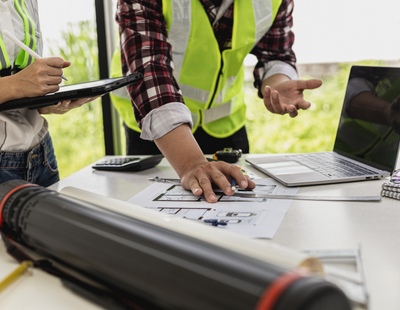For prospective buyers, rural fuels can be alien and confusing. If they have previously used mains gas, they may not understand how these alternative systems work, or how much they cost to install, run or maintain.
To add to the confusion, the government’s recently-introduced Clean Growth Strategy and Clean Air Strategy outlines the need for lower carbon heating alternatives to aid emissions targets. This may mean homeowners could be concerned about the type of heating in the rural homes they view.
With this in mind, we wanted to follow on from our previous guide to selling ‘off-grid’, elaborating on how being clued up on rural fuels and more renewable options can help rural estate agents educate and reassure potential buyers…
LPG
LPG is almost identical to mains gas, and can be used for heating and hot water, gas fires, gas cooking and even household appliances, such as tumble dryers. The versatility makes LPG a great option for homeowners who currently live on-grid using mains gas. It is also an efficient fuel as modern condensing LPG boilers achieve efficiencies of 90% or more.
LPG is one of the greenest off-grid fuel choices, emitting around 20% less CO2 per kWh than heating oil. It also provides fuel security, being virtually impossible to steal.
You can spot that a property has LPG as the fuel is stored outside of the property, either in an; above-ground tank, an underground tank or gas cylinders. You’ll hardly be able to spot an underground tank as all you’re likely to see is a round green circular lid as the rest of the tank is hidden out of sight underground.
For smaller properties or those short of outdoor space, cylinder packs can be housed in secure units. Also, auto-ordering is also available which monitors the gas levels in the tank and orders a delivery when required.
If a property is currently on oil but a prospective buyer is used to being on mains gas and wants the familiarly of it in their new home, switching to LPG is easier than the home owner may think as all that is usually required is a new boiler and LPG storage tank (subject to siting T&Cs) which can be easily arranged through an LPG supplier such as Calor.
Oil
Traditionally, oil was the main off-grid fuel used for heating homes, and the majority of rural off-grid properties still use oil for heating. Systems with modern condensing boilers are efficient, and typically, a new condensing oil-fired boiler will have an efficiency of 92% to 93%, compared with 85% for a new non-condensing boiler and 60% to 70% for older systems.
However, large oil tanks are required to store the fuel, which some buyers can find off-putting, however you can assure them that there are a number of alternative options should they want to improve the garden aesthetics.
A downside of oil is that the homeowner is responsible for any leakages or spillages, whether it’s due to poor installation, insufficient maintenance or vandalism, and it’s likely that they will have to monitor oil levels and arrange refills when required.
Electricity
Electric boilers are also found in rural homes for heating and hot water. They are easy to install and are a quiet system for homes. They also are energy efficient as little heat is lost in the process of heating water, but in turn have higher running costs than other energy options.
Electric storage heaters are also popular and can be used as a more cost-effective option to electric boilers. A downside to electric heaters is the lack of control over your heating in comparison to a central heating system. On average it’s also 2-3 times more expensive to heat a home with electric than oil or LPG.
Solid fuel
Coal and wood burning stoves are aesthetically appealing options and can be cheaper to install and fuel than other alternatives. However, solid fuel options are extremely manual and aren’t environmentally friendly as they increase air pollutants and greenhouse gases, which can have a negative impact on both the homeowner’s health and the environment.
This is outlined in the government’s Clean Air Strategy, with new legislation ensuring only the cleanest wood burning stoves are available for sale by 2022, to improve air quality and reduce the amount of particulate matter. The by-product soot can be messy and storage can also be a concern, as keeping excess wood or coal to replenish the stove can prove impractical in some homes.
Air Source Heat Pumps
ASHPs are often a popular renewable choice for new build rural properties. They function by utilising the heat from the air via a cylinder system which is then pumped into the property to provide heating and hot water.
ASHPs provide environmentally friendly technology, yet the initial outlay can be costly to purchase and require specialist installation, which isn’t always efficient when retro-fitted. Also, they perform optimally in warmer climates and need to be controlled accurately to deliver the efficiencies required.
BioLPG
A renewable form of LPG, BioLPG is an option for eco-conscious buyers looking to reduce carbon emissions.
BioLPG reduces the carbon footprint for home heating by 38 per cent compared to heating oil. If a house is already on LPG, BioLPG, available exclusively from Calor can be used instead, with no changes to the LPG heating system or appliances required.
Just like with conventional LPG, homeowners can also benefit from auto-ordering and hidden underground tanks.
*Mark Cleaver is an Area Cylinder Manager at Calor Gas











.png)


.png)



Join the conversation
Be the first to comment (please use the comment box below)
Please login to comment